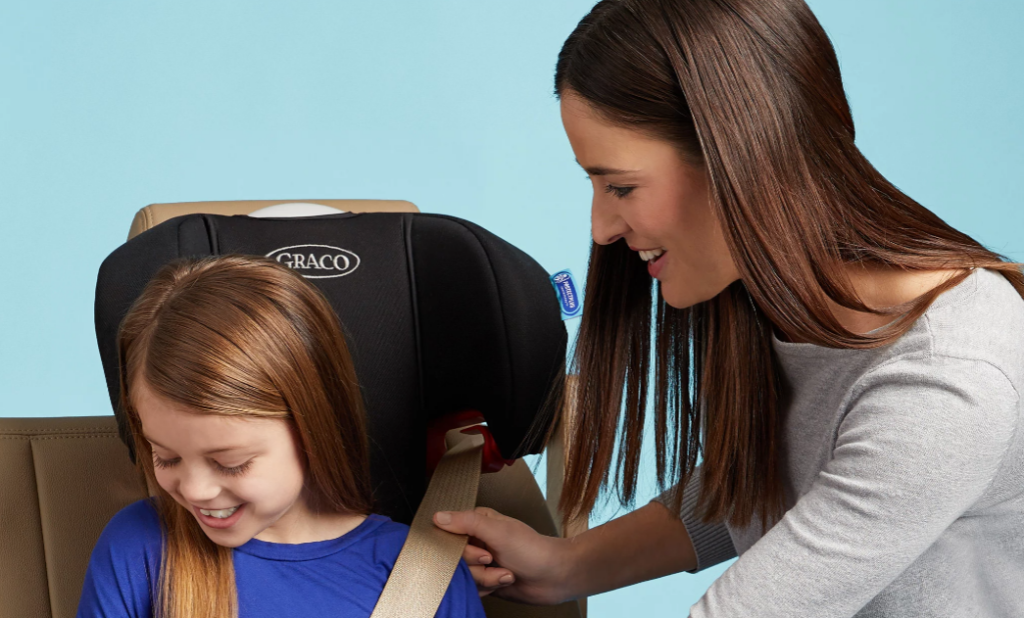- Car Seat Expiration Guide - November 4, 2022
- Best Britax Car Seats Guide - October 30, 2022
- Front Facing Car Seat Age Guide - October 29, 2022
You might wonder if an infant or convertible seat you bought for your older child will still be good for your younger one. The answer to this question will depend on the age difference between your children.
All seats expire after six to twelve years after their date of manufacture, depending on the brand, type, and model. Chances are that you can use the same infant car seat for both children, provided their age difference isn’t bigger than three years.
Continuing to use a car seat after its expiry date isn’t illegal, but it may put your child in danger because its safety mechanisms might be worn out. In this car seat expiration guide, I’ll show you how to check the seat’s expiry date and point out some factors that can limit its durability.
Table of Contents
- 1 Bottom Line Up Front
- 2 Reasons Car Seats Have Expiration Dates
- 3 Average Car Seat Lifespan
- 4 Checking the Seat’s Expiry Date
- 5 Car Seat Replacement Guideline after an Accident
- 6 Buying Secondhand Car Seats
- 7 Does the Law Prohibit the Use of Expired Car Seats?
- 8 How to Dispose of an Expired Car Seat?
- 9 FAQs
- 10 Final Thoughts
Bottom Line Up Front
All car seats are designed for specific age groups, as rear-facing models are only suitable for kids younger than four, while booster seats are designed for school-age children. Hence, most infant seats last for up to six years, while models that adjust to the child’s weight and height through the years expire after eight to twelve years.
Under current state car laws, parents can transport children in expired seats, although AAP and NHTSA advise against using safety seats after their expiry date.
| Safety seat type | Average expiry date |
| Infant seats | Six years |
| Convertible seats | Six to ten years |
| Combination seats | Eight to ten years |
| Booster seats | Six to ten years |
| All-in-one seats | Eight to twelve years |
Reasons Car Seats Have Expiration Dates

Like most shoppers, I want every product I buy to be reliable and durable. But, I discovered several good reasons why manufacturers try to prevent parents from using the same car seat for too long. Here is why brands put expiration dates on car seat models.
Everyday Use
According to car seat laws, all children riding in passenger vehicles must be restrained in a safety seat. Hence, you’ll have to use the car seat whenever you take your child to the doctor or anywhere else.
Frequent use strains the seat’s harness, belt tightener, or anchors over time as their capability to keep a seat firmly in place slowly deteriorates. Constant exposure to low and high temperatures damages the seat’s plastic components.
Putting an expiry date on a car seat prevents parents from using a worn-out seat that can no longer deliver the same level of safety it once could.
Keeping Up with Traffic Safety Laws

Lawmakers regularly update child passenger safety regulations. For instance, Maryland is the latest state to join California, and sixteen other states that require all children under two to ride in rear-facing seats. States often change the height and weight requirements a child must meet to sit in a specific type of seat. Car seat brands limit the lifespan of their products to ensure they comply with the latest car seat regulation updates.
Companies are developing new materials and shock-absorption technologies at an astounding rate. So, a seat produced in the 2000s may have only some of the safety features offered by models released in the last couple of years.
Insufficient Testing
I mentioned earlier that all car seat types are made for specific age groups. So, rear-facing-only and convertible seats are designed for kids under the age of five. Manufacturers don’t test these models for other age groups. So, they don’t know how they’d behave when used to accommodate a school-aged child.
As a result, most convertible and infant seats expire after six years, while all-in-one models can last up to twelve years because they undergo testing that ensures the safety of kids from all age groups.
Defective Parts
Brands recall car seat models from time to time. They also encourage all customers to register the car seats they purchased so that they can activate the warranty and receive notifications about recalled products.
Registered users receive remedy kits if the seat they purchased is recalled. However, companies are aware that a certain percentage of their products will never be registered, which is why they rely on expiration dates to prevent drivers from using car seats that contain defective parts.
Average Car Seat Lifespan

Almost all car seats expire six to ten years after the day of manufacture (DOM). Most convertible and infant car seats expire after six or seven years, while booster seats usually have ten-year expiration dates. However, Graco’s and Nuna’s convertible seats expire after ten years, while Chicco’s models from this category are only good for six years.
Combination and booster seats last for eight to ten years, while 3-in-1 or 4-in-1 usually have ten-year or twelve-year expiry dates. The model’s lifespan will ultimately depend on the seat type and the manufacturer, so you should only use the information I provided here as a guideline.
Checking the Seat’s Expiry Date
Britax and Graco include the expiry date information in product descriptions of all models featured on their websites, allowing you to check for how long you can use the seat before you buy it. Here’s where to check when seats produced by the top car seat brand expire.
- Chicco – All models, regardless of their type, have labels on the seat and base that contain the model’s DOM and expiry date.
- Britax – Even though the brand’s website contains information about the expiry dates of different models, you’ll still have to find out the year and the month when the car seat was produced to determine how long you can use it. The brand includes this information in the seat’s manual.
- Graco – DOM and expiry dates are stamped on the back of the seat.
- Nuna – The product’s DOM is at the bottom of the seat. You must use the manual to find out when it expires.
I want to add that some brands don’t provide DOM or expiry dates for their products. So, you should assume that you can’t use the seat for more than six years if you get a model that doesn’t have an expiry date label on its back or bottom.
Car Seat Replacement Guideline after an Accident

NHTSA offers a set of instructions on how and when to replace a car seat if the vehicle has been in a crash. According to these guidelines, all car seats should be replaced, regardless of when they expire, if the vehicle suffered considerable damage in an accident.
However, buying a new seat isn’t necessary if the accident can be characterized as minor. The agency outlines the conditions under which you don’t have to replace a car seat.
If the car’s back doors were undamaged, its airbags weren’t activated during the collision, and you’re able to drive away from the site of the accident, then you can continue using the same seat. Still, it would be best to inspect the seat for any signs of damage before you decide you don’t need a new one.
I recommend scheduling the seat check at the local fire or police station to make sure all its safety features are functioning correctly.
Buying Secondhand Car Seats
The question of expiration dates is somewhat divisive. Industry-leading brands insist that all models must be replaced after they expire, but some child passenger safety experts claim that using an expired car seat doesn’t expose a child to additional risk.
The US Government doesn’t prohibit the sale or use of expired seats. Still, AAP and other agencies urge drivers to replace expired safety seats. Most parents are confused by the lack of regulation regarding expired car seats and contradictory statements issued by government officials and brand representatives.
I think buying an expired seat carries too much risk, but getting a used seat with a few years of service life left is a relatively safe bet. That said, I don’t recommend buying a safety seat from an unreliable buyer and strongly advise checking its expiry date.
Does the Law Prohibit the Use of Expired Car Seats?

Transporting a child in an expired safety seat is legal, and you cannot get a fine for using a seat after its expiry date. The same is true for recalled models, but only if their defects have been amended.
Although federal and state laws don’t set a threshold at which the seat has to be replaced, they often mandate using the seat according to the manufacturer’s instructions. This is hardly surprising because expiry dates are determined by companies based on testing they conduct on different seat parts.
Also, all safety seats in active use must meet federal safety standards, and an expired model may not be able to meet these standards. Even though it’s not illegal to allow a child to ride in an expired safety seat, my advice is to replace the seat after it expires since this is the only way to ensure your child has the best protection it can get.
How to Dispose of an Expired Car Seat?
The components of safety seats are made from recyclable materials, so the simplest solution is to drop off the seat you no longer want to use at the local recycling center. You should check if the Trade-In program is available at the nearest Target because you can get a coupon you can use to buy a new seat or other baby equipment.
Websites like Recycle Your Seat offer a list of institutions and organizations that accept expired seats, but the information isn’t available for all fifty states.
Throwing the seat away is also an option, but car seat technicians recommend cutting its seat belt and damaging it so that no one else can use it. If this seems like too much work, you can just stick a ‘Don’t Use’ sign to the seat before you dispose of it.
FAQs
Question: Do Car Seat Bases Have Expiry Dates?
Answer: Yes, they do. Most models have the same expiry date as the seats they’re compatible with.
Question: Can a Car Seat Become Unsafe Before its Expiry Date?
Answer: Frequent exposure to the sun and high temperatures can damage the seat’s plastic components and affect its ability to absorb impact. Hence, the seat’s safety features might start to deteriorate before it expires.
Question: Is it Safe to Buy a Car Seat That Doesn’t Have a DOM or Expiry Date Label?
Answer: Manufacturers don’t have to provide the seat’s DOM or expiry date, but you shouldn’t assume that all models that come without this information have underwhelming safety features.
Instead, you should learn more about the quality of the LATCH system or its harness and be prepared to replace it after six years.
Final Thoughts
Discarding car seat expiry dates due to the lack of regulation isn’t advisable because you’ll have no way of determining the seat’s ability to protect your child after six to ten years of frequent use.
Sticking to the manufacturer’s recommendations is, in my opinion, the best way to ensure the seat your child is riding in can protect it from injury. Also, you should approach secondhand seats with caution as they may no longer be safe to use even if they’re not expired.
Remember that how long your child can use a safety seat doesn’t only depend on when the seat expires. The seat’s type, weight, and height limits are factors determining when your kid needs to switch to a new seat. I suggest exploring all-in-one models if you want to use the same seat until your child is ready to sit in a regular car seat.



